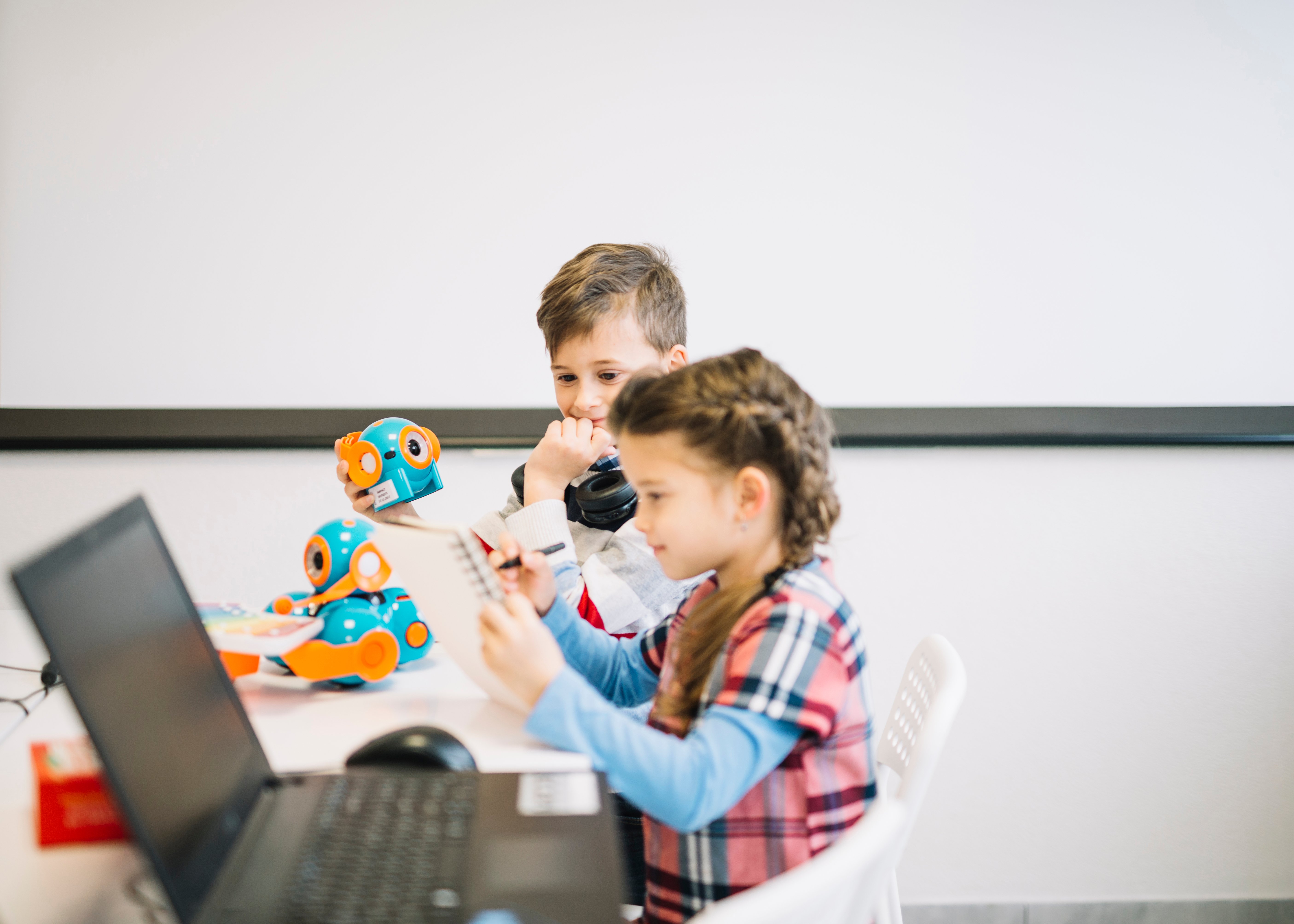By Ronie Salazar
 Image by Freepik
Image by Freepik
Our everyday lives now depend heavily on technology, and incorporating it into the classroom is critical for ensuring that students are prepared for the future. Educators can improve their teaching strategies, engage students, and offer tailored learning experiences by using technology. It provides a wide range of tools and resources that accommodate various learning styles, encouraging critical thinking and active engagement. Additionally, technology gives students the digital skills needed in the workforce of the twenty-first century, increasing accessibility and inclusivity in education.
With cutting-edge tools like robotics and videos, technology is linked with the future of education. Students are inspired by robotics in the classroom, and they gain valuable skills like cooperation and problem-solving. Robots work as interactive partners, encouraging hands-on learning and STEM inquiry. Teachers can convey dynamic content, engage students through visual storytelling, and get around physical classroom constraints by using films. To better prepare students for the digital age, the seamless integration of technology into education produces adaptable and immersive learning environments that combine traditional instruction with digital resources. Let's examine how robotics and video production might improve teaching and learning opportunities and help educators realize the full potential of technology.
The Role of Robotics in Education
Robotics in education refers to the integration of robots and programmable devices into the learning environment to enhance teaching and learning experiences. These robots can range from simple, programmable toys to more advanced, autonomous machines. The potential of robotics in the classroom is vast, as it allows students to engage with technology in a hands-on and interactive way, promoting deeper understanding and application of concepts.
Benefits of using robotics in education
Enhancing problem-solving skills: By creating and programming robots to carry out certain tasks, robotics encourages students to use critical thinking and problem-solving skills. In order to diagnose and debug their programs, it encourages students to break difficult problems down into smaller, more manageable pieces.
Fostering creativity and innovation: Students can use robotics as a creative outlet to design and construct their own robots, letting them use their imagination and come up with new ideas. It challenges pupils to think creatively and provide original responses to problems encountered in the real world.
Promoting collaboration and teamwork: As students work together to design, build, and program robots, they frequently collaborate and work in teams when working with robots. This encourages teamwork, cooperation, and communication skills while simulating situations where collaboration is crucial in the real world.
Personalized and adaptive learning experiences: Robotics can be tailored to meet the individual needs of students, allowing for personalized and adaptive learning experiences. Students can work at their own pace, receiving immediate feedback from the robot's actions, and adjusting their strategies accordingly. This personalized approach helps students develop self-directed learning skills and promotes a growth mindset.
Creating Videos for Effective Teaching
Visual content plays a crucial role in education as it has the power to captivate learners and enhance their understanding of complex concepts. Visuals, such as videos, offer a multi-sensory experience, engaging students on both visual and auditory levels. By incorporating visual content into teaching, educators can create a dynamic learning environment that appeals to different learning styles and promotes active participation.
Benefits of using videos for teaching
Enhancing engagement and attention: Videos have a special knack for grabbing students' interest and holding it throughout the course. The use of moving pictures, sound effects, and visual effects engages pupils and makes learning more interesting and memorable.
Facilitating better understanding and retention: Visuals are powerful tools for clarifying abstract or complex concepts. Videos can provide demonstrations, simulations, and real-life examples that help students visualize and comprehend difficult topics. Visual content enhances students' retention by reinforcing the information through vivid imagery and storytelling.
Encouraging active learning and interactivity: Students may be asked to pause, think, and reply to questions or prompts as a result of interactive videos. Students are encouraged to think critically, apply their knowledge, and actively engage in the learning process using this active learning methodology.
Strategies for creating educational videos
Planning and scripting: It is crucial to consider the content, structure, and goals of a video before producing it. The learning objectives are supported by a well-written script that guarantees a smooth information flow, keeping the movie focused and succinct.
Utilizing multimedia tools and software: Various multimedia tools and software are available to assist in video creation. These tools provide features for editing, adding visuals, music, and captions, making it easier for educators to create professional-looking videos without extensive technical expertise.
You can also use a video compressor to ensure the videos will not buffer.
Incorporating storytelling and visual aids: To make educational videos engaging, storytelling techniques can be used to connect with students on an emotional level. Incorporating visuals, such as charts, diagrams, and animations, help visualize abstract concepts and reinforces understanding.
Considering accessibility and inclusivity: It is essential to make sure that all pupils can access the videos. Students with hearing or visual impairments can access the material by providing closed captions, transcripts, and audio descriptions. Also helping to foster an inclusive learning environment is the production of videos with a variety of representations and inclusive terminology.
Conclusion
It is crucial for educators, administrators, and politicians to embrace technology and its potential to improve teaching and learning as we stand at the beginning of an exciting future in education. Let's actively include robots in the classroom to encourage kids' creativity, problem-solving abilities, and teamwork. Let's use video production to engage students, improve understanding, and encourage active learning at the same time. Together, let us embrace the future of education, unleashing the full potential of technology to revolutionize teaching and empower students to thrive in an ever-evolving world.
Learn more about Robotics and Technological tools for the classroom?


